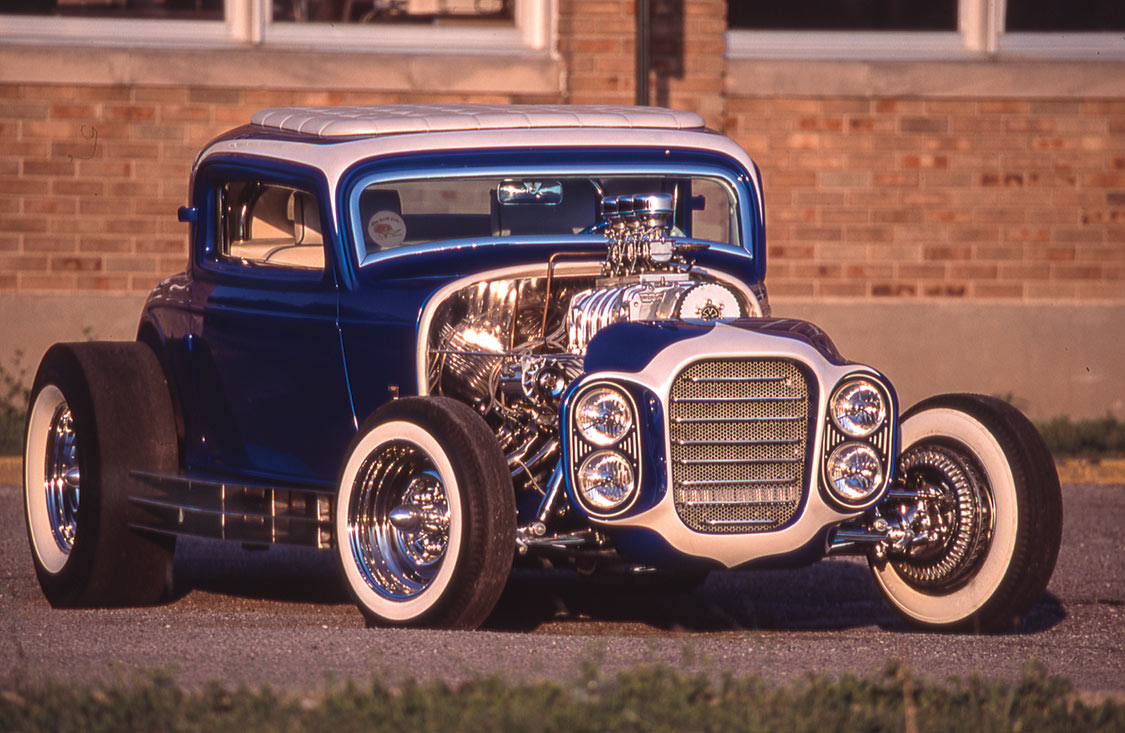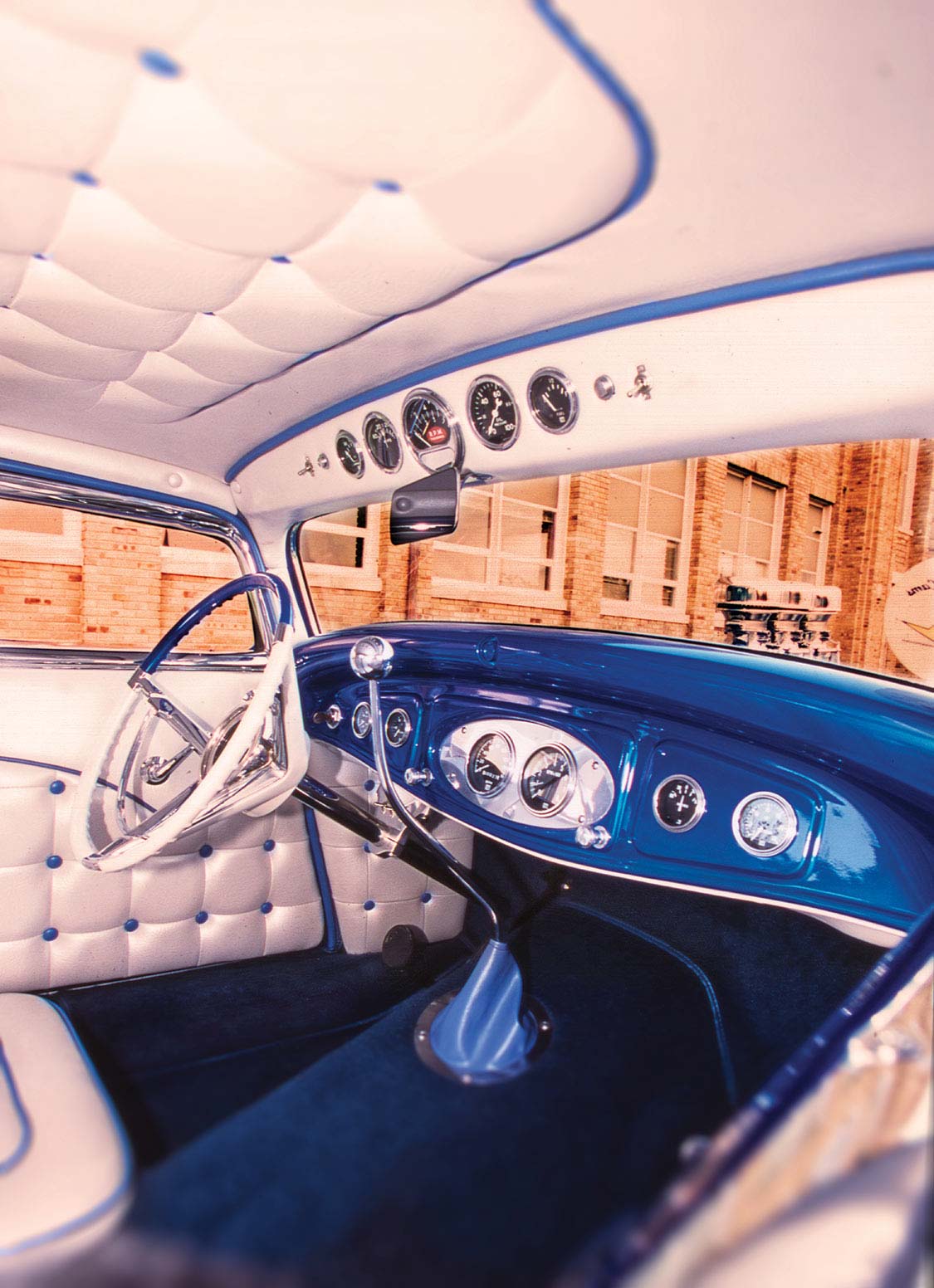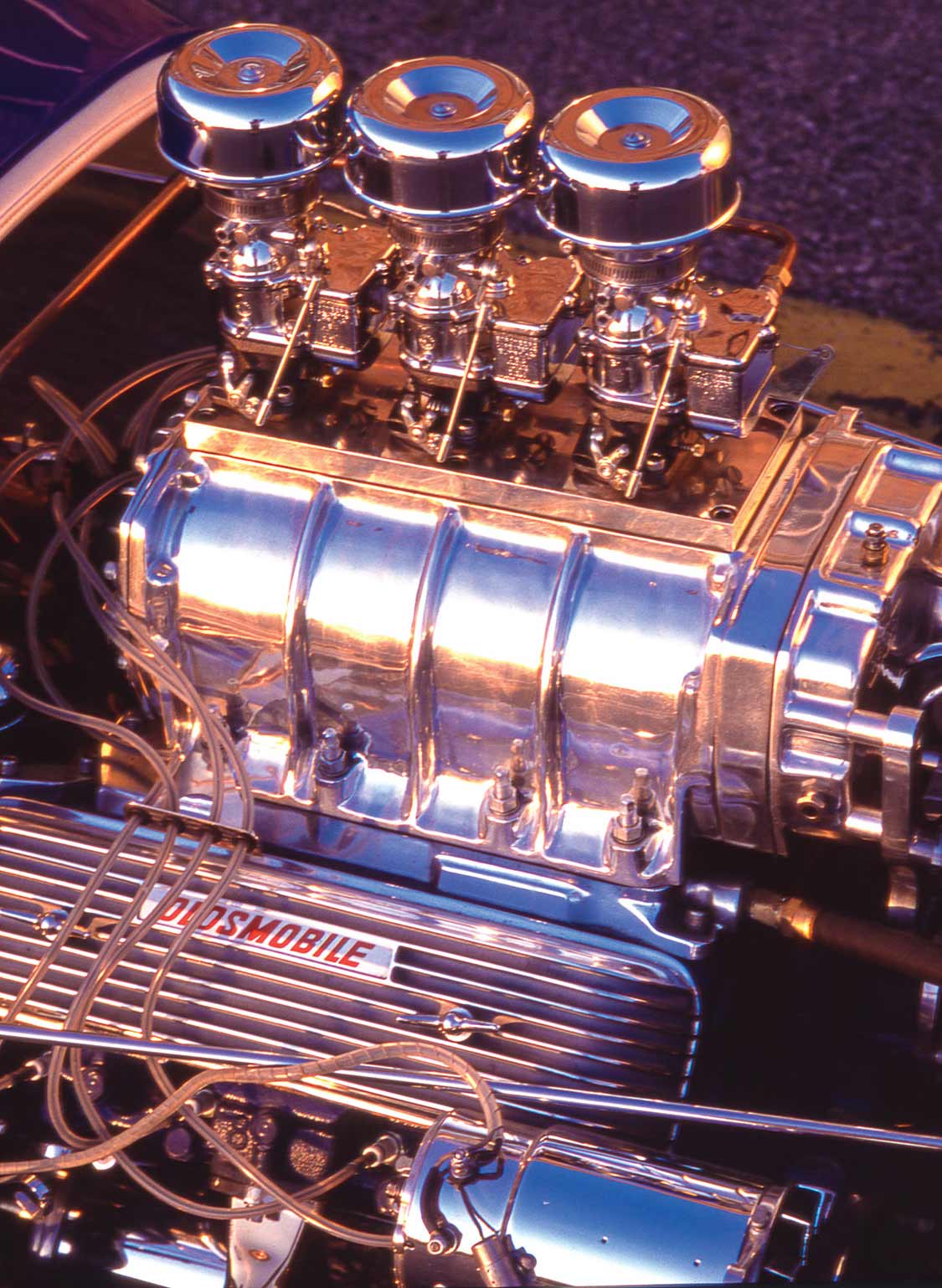 Ken Gross
.
May 31, 2022
.
All Feature Vehicles
Ken Gross
.
May 31, 2022
.
All Feature Vehicles

Of course you know this car—it’s the outrageous chrome-plated and scallop-painted 1932 Ford coupe that first appeared on the July 1961 cover of Hot Rod magazine. And later, Eric Rickman’s lead photo from that story (minus the car owner’s head and shoulders!) also defined a best-selling Beach Boys album, appropriately titled Little Deuce Coupe. To most listeners of this quintessential car-song album, it mattered little that the 1932 in the catchy cover tune actually boasted “a flathead mill” while the album-cover car was powered by a blown Olds. Even so, this radical three-window will always be the quintessential “Little Deuce Coupe.”

Clarence Catallo of Dearborn, Michigan, who purchased the basic car that would become the “Little Deuce Coupe” for just $75 in 1956, could never have predicted it would rank among the most famous rods in history. When he found it, the coupe was sitting in a gas station across from his parents’ grocery store in nearby Allen Park. A friend had to drive it home for him because 15-year-old Catallo didn’t yet have his driver’s license. But he got right to working on his new wheels.
He channeled the coupe six inches, painted it dark blue and dropped in the carbureted Oldsmobile V-8. By 1958, at Detroit Dragway, a McCulloch supercharger hunkered on top of the Olds, which looked as though it had been forced into the engine compartment with a whip and a chair. Catallo continuously fine-tuned the bored-out, 344-cu.-in. engine built by Bill Wanderer, and the coupe ran sub-13-second quarters, turning a best speed of 112 mph. More importantly, it championed a minimalist look that soon appeared across the country. To further this, Catallo also modified the rear fenderwells to follow the outline of its 8:20 x 15 Inglewood slicks, accenting the car’s lowness and making it even racier.

Catallo became known as “Chili,” a period euphemism for “cool.” His car was becoming even cooler. Detroit’s reigning customizers, Mike and Larry Alexander—together known as the “A Brothers”—sectioned the body six inches, fabricated a grille shell with a mesh insert and eight horizontal grille bars, and added then-fashionable quad headlights using Lucas Flamethrower firepower. Three aluminum strakes flowed from the engine headers rearward, evoking modernistic running boards while also emulating the flow of exhaust gasses along the body sides.
Echoing its drag-racing days, the polished engine received a hot Clay Smith camshaft, Chrysler intake and GMC truck exhaust valves, and Jahns blower pistons. But the pièce de résistance was a new GMC 6-71 blower topped with three Strombergs. The firewall was polished, so from the right angle, the engine looked even bigger than it was. Also, nearly everything up front was chromed including the 1937 Ford tubular front axle, Monroe shocks, leaf spring, split wishbones and Kinmont brakes.
At the 1959 Detroit Autorama, Chili’s coupe had the extreme visual impact that all the big show entrants sought. This car’s combination of modern mods on a traditional shape was well executed and everything worked together. Catallo’s coupe was a star.
The Alexander Brothers installed their trademark twin Frenched antennas, which ingeniously doubled as the electric door-solenoid switches. Big slicks, wild blue metallic paint and, of course, the beaucoup chrome were all popular period modifications. At the 1959 Detroit Autorama, Chili’s coupe had the extreme visual impact that all the big show entrants sought. This car’s combination of modern (for the time) mods on a traditional shape was well executed and everything worked together. Catallo’s coupe was a star.
That was all cool, but Chili was just getting started. Now done with high school, he convinced his parents that he should attend college in California. After leaving Detroit and towing his coupe west for classes at Long Beach Community College in California, he soon exchanged his labor as a shop helper at Barris Kustom, in nearby Lynwood, for a 3-in. top chop. Here Chili worked with Herschel “Junior” Conway, who was also responsible for a new Pearl and translucent Oriental Blue finish, applied just before the car graced Hot Rod’s famous cover. The car’s rooftop now rode 15 in. lower than a stocker, with virtually perfect proportions.

Larsen Upholstery trimmed the tufted white Naugahyde interior with blue accents, and for seating, twin bucket seatbacks joined two seat-cushion pads attached directly to the floor. Additional gauges and switches were added to the ceiling, and the steering wheel was a big, dished unit from a 1959 Lincoln Continental.
Not long after its Beach Boys album appearance, Catallo sold the car for around $5500, reportedly because he had done everything he wanted to it. The coupe appeared in several major shows before being acquired by a Canadian buyer. Around 1965, the coupe found its way to Ray Woloszak of Long Island, New York, who later modernized it with a 1969 MoPar 440-cu.-in. engine, Torqueflite automatic and Dana 60 rear end.
“I owned that car for 32 years,” Woloszak says. “Once the chassis was sorted out, I drove it everywhere.” When Woloszak bought a place in Florida in the 1980s, the coupe headed south with him. “I rebuilt it three times, including a new frame and chassis parts,” he adds. “I did it right.” Woloszak later rented the coupe to Bob Larivee Sr. and his son Bob Jr. to appear in their International Show Car Association shows. “They paid me $10,000 for six months.” Woloszak recalls. “I told them: ‘Don’t bring the car back. Once you take that car, I won’t miss it.’”
This brings the story into the late 1990s, when Curt Catallo, Clarence’s son, persuaded his father to find and repurchase his old coupe. “As a kid, I knew the trophies before I knew the car,” Curt says. “Many of them were my height, and it seemed like we had acres of them. I thought it was great my dad had a cool car that won a lot of trophies, but he sold it before he met my mother. I really got under my dad’s skin about it. I thought of the coupe like a family heirloom that should be preserved. Fortunately, the late Bob Larivee Jr. helped us find it. Without him, we never would have gotten it back.”

However, there was a problem with the Catallos’ plan. Woloszak didn’t want to sell the car back to them, because he was sure they’d restore it to the way it was first built. So instead, Woloszak sold the coupe in 1999 to Larivee—who initially planned to feature it in his family’s car shows—for about $40,000. Eventually though, the Larivees did sell the coupe back to Catallo, who immediately started collecting parts to restore it to its cover-car form.
Sadly, before his objective to restore the car could be completed, Clarence Catallo passed away. Curt Catallo subsequently took over the project, delivering the car to Wheel to Wheel, in Troy, Michigan, for restoration. During this process, Mike Alexander dropped by to help restorers do the work correctly, drawing upon his accurate memories of the now-historic coupe. The original aluminum side strakes were located and repaired, new rear nerf bars and taillights were fabricated, and finding a proper 1959 Lincoln steering wheel completed the interior.
Today, the “Little Deuce Coupe” perfectly defines its era. The emphatic grille, unusual quad headlights and side strakes, never duplicated, are the car’s signature elements. Now rejuvenated in brilliant electric blue, re-lathered in chrome and paint scallops, and standing proud with its gleaming blown Olds motor, this once-upon-a-time $75 gas-station-hand-me-down has wonderfully come full circle. With a righteous pedigree including the A Brothers, Barris and Conway, and its starring role in the quintessential car-music album of all time, this 1932 is a proud part of hot-rod history as well as an enduring tribute to the boyhood vision of Clarence “Chili” Catallo.
Ken Gross ranks among the world’s top hot-rod historians and judges, and is the author of the book, “The Art of the Hot Rod.”
We use cookies to enhance your browsing experience, serve personalized ads or content, and analyze our traffic. By clicking "Accept All", you consent to our use of cookies. Visit our Cookie Policy for more info.
Notifications
Share Link